Working without the direct presence of or visual contact with colleagues is common in many industries and is becoming increasingly prevalent due to developments such as digitalization, rationalization and automation. Whether in security services, production, or maintenance work: work alone carries specific risks that must be identified and minimized. It is therefore essential for companies to implement appropriate protective measures to ensure the safety and health of their employees.
Where does lone work occur?
Working alone is common across numerous industries and occupational fields. It can occur either on a permanent or temporary basis – for example, when employees work without direct contact with others for a limited period of time. There is no fixed list of professions or tasks affected by lone work, as it can occur in almost any work environment, such as:
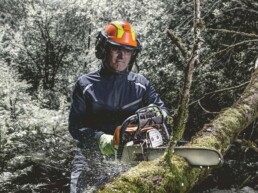
Forestry and agriculture: Operating machinery in remote areas.
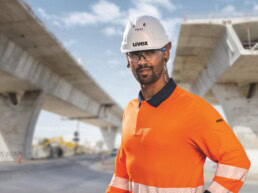
Construction and cleaning industries: Work in construction, mining, as well as in street cleaning or winter services.
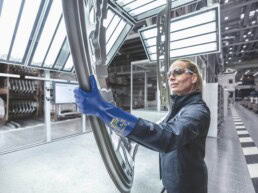
Industry & production: Maintenance, servicing, inspection or repair tasks, as well as work in automated production halls.
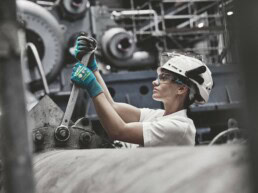
Utilities & infrastructure: Working on electricity, gas or water pipes, maintaining machinery and equipment.
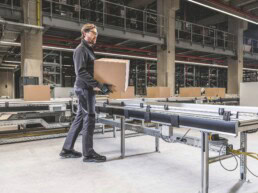
Logistics & Transport: Truck drivers or work in warehouses.

Shift work and office work: Working in shifts outside regular core working hours or in individual offices.

Healthcare & nursing: Availability in nursing facilities, mobile care services and hospitals.

Security services: Security guard and security services, as well as property and plant security.
Legal framework and obligations
The German Social Accident Insurance (DGUV) defines lone work as activities in which a person works “alone, out of calling and visual range of other people.” This means that in the event of an accident or sudden illness, help cannot be provided immediately.
According to § 8 of DGUV Regulation 1 “Principles of Prevention,” employers are obligated to implement suitable technical or organizational personal protection measures in addition to general safety precautions when hazardous tasks are performed in lone work (BGHM).
One technical measure may be the use of a so-called personal emergency signal system (PNA), utilizing mobile personal emergency signal devices (PNG), which enable reliable emergency alerts when needed.
Risk assessment as a foundation
A thorough risk assessment forms the foundation for the safe implementation of lone work. The following steps should be considered:
- Identifying hazards: What specific risks are associated with the planned activity?
- Assessing the risk: How likely is an accident to occur, and how severe would the consequences be?
- Defining protective measures: What technical, organizational, or personal measures are necessary to minimize the risk?
The DGUV Information 212-139 “Emergency call options for people working alone” provides detailed guidance and recommendations on this topic. The following illustration shows an example of the lone work safety process.
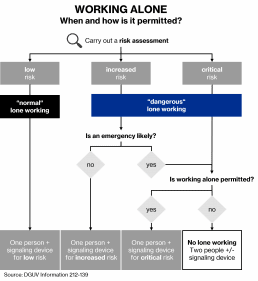
How can I secure lone workstations?
To minimize risks for lone workers, companies should implement a range of protective measures. The proven TOP principle helps prioritize effective actions:
- Technical measures: Use of personal emergency signal systems (PNA) that automatically trigger alarms and transmit the affected person’s location in case of emergency.
- Organizational measures: Regular safety patrols, fixed reporting intervals, or the introduction of two-person rules for particularly hazardous tasks.
- Personal measures: Training employees in first aid, instructing them on specific hazards, and conducting regular emergency drills.
A central element of lone work is ensuring rapid emergency notification. Depending on the level of risk, different technical alert systems may be used:
- Low risk: Landline or mobile phone.
- Increased risk: Personal emergency signal systems (PNA) with automatic alarm functions.
- Critical risk: Continuous monitoring by a second person or technical systems with a permanent connection to an emergency call center.
The selection of an appropriate emergency notification method should always be based on the risk assessment. Below is a list of common alert systems used in lone work and the levels of risk they are designed to cover.
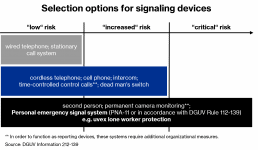
uvex lone worker protection
Lone work presents unique challenges. With uvex lone worker protection – our individually configurable safety solution for lone work – your employees are protected at all times. Thanks to our wide portfolio of personal emergency signal devices (PNG) – ranging from wearable emergency pagers to smart insoles – we’ll find exactly the right solution for your requirements.
This is complemented by our 24/7 control center, which responds immediately in emergencies and ensures uninterrupted safety 365 days a year. This guarantees optimal protection for your lone workers – and peace of mind for you as an employer.
If you would like personal advice, feel free to contact us via our contact form.
